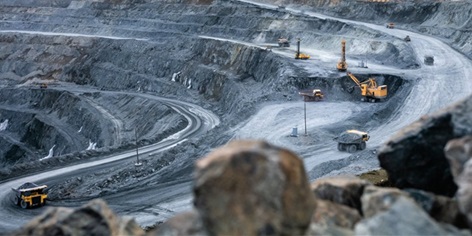| (Mains, General Studies Paper-3: Technology, Economic Development, Biodiversity, Environment, Security and Disaster Management, Infrastructure: Energy, Ports, Roads, Airports, Railways etc.) |

Context
- In India’s efforts to reduce its dependence on conventional fossil fuels and move towards cleaner energy sources, the initiative of converting abandoned coal mines into solar power generation centres has emerged as an important and innovative step.
- According to a recent analysis by Global Energy Monitor (GEM), India ranks fourth in the world in terms of potential for solar power generation from abandoned coal mines.
Solar Power Possibilities in India
- GEM’s analysis has identified more than 63 abandoned mine sites in India covering an area of more than 500 sq. km.
- These sites have a total solar power generation potential of 27.11 gigawatts (GW), which is about 37% of India’s current installed solar capacity.
- In particular, states like Telangana, Odisha, Madhya Pradesh and Chhattisgarh are among the top 20 regions globally with the highest land availability from abandoned mines. These four states alone have the potential to generate more than 22 GW of solar power.
Global scenario
- There are more than 3,800 active coal mines globally, producing 95% of the world’s coal. However, 33 countries have committed to phase out coal, which is likely to result in the closure of hundreds of mines in the coming years.
- According to GEM’s analysis, recently closed surface coal mines in 28 countries could be converted to solar power, yielding a total potential of 288 GW.
- This includes 103 GW from 300 recently closed mines and 185 GW from 127 soon-to-be closed mines. This is equivalent to Germany’s annual electricity consumption.
Key Benefits
Converting abandoned coal mines into solar power parks will not only bring environmental benefits but also economic and social benefits.
- Job creation: These projects can create 259,700 permanent jobs and 317,500 temporary construction jobs globally, offsetting the job losses in the coal sector by 2035.
- Proximity to the grid: Also, 96% of abandoned mines are within 10 km of the electricity grid and 91% are close to connection points such as substations, making it easier to set up solar power projects.
- Environmental benefits: Old coal mines will also eliminate serious problems such as methane emissions, which is 28 times more potent greenhouse gas than CO₂.
Key challenges
- Land ownership and acquisition: It is difficult to trace and secure ownership of abandoned mines, which can hinder the initiation of projects. This is a major challenge especially in countries like India, where policies are not clear.
- Regulatory and permit issues: Getting permits for mine closure, land restoration and solar projects is a complex process, with many legal and administrative hurdles.
- High cost and technical challenges: Solar panel installation, land restoration and grid upgrades require high initial investment. Also, converting uneven or contaminated land to solar use is technically challenging.
- Grid integration: Maintaining stability in the grid is challenging due to the variable nature of solar energy (day-night and weather dependent). This requires an advanced grid management system and infrastructure.
Way forward
- Clear policies and regulations: Clear and integrated policies should be formulated for mine closure, land transfer and solar project establishment. A national policy framework should be developed for mine closure and regeneration in India.
- Digitization of land records: A digital land record system should be developed to clarify the ownership of abandoned mines.
- Priority to local communities: Land rights should be returned to local communities before land transfer to solar projects, thereby increasing community trust.
- Legal framework: Special judicial or arbitration mechanisms should be established to resolve land ownership disputes.
- Methane leak control: Sealing and ventilation systems should be installed in mines to reduce methane emissions.
- Safety monitoring: Regular monitoring and maintenance systems should be implemented to prevent risks such as roof collapse and sinkholes.
- Public-Private Partnership (PPP): Encourage partnerships with the private sector for solar projects to reduce financial burden.
- Pilot projects: Test cost and technical feasibility through small-scale pilot projects.
- Use of advanced technology: Use innovative technologies (such as modular solar systems and automated monitoring devices) for solar panel installation and land restoration.
Conclusion
The challenges of converting abandoned coal mines into solar power plants can be addressed through coordinated efforts of policy reform, community participation, environmental management and financial assistance. India has the potential to become a global leader in this field and can promote energy security, environmental improvement and economic growth by implementing these measures.



